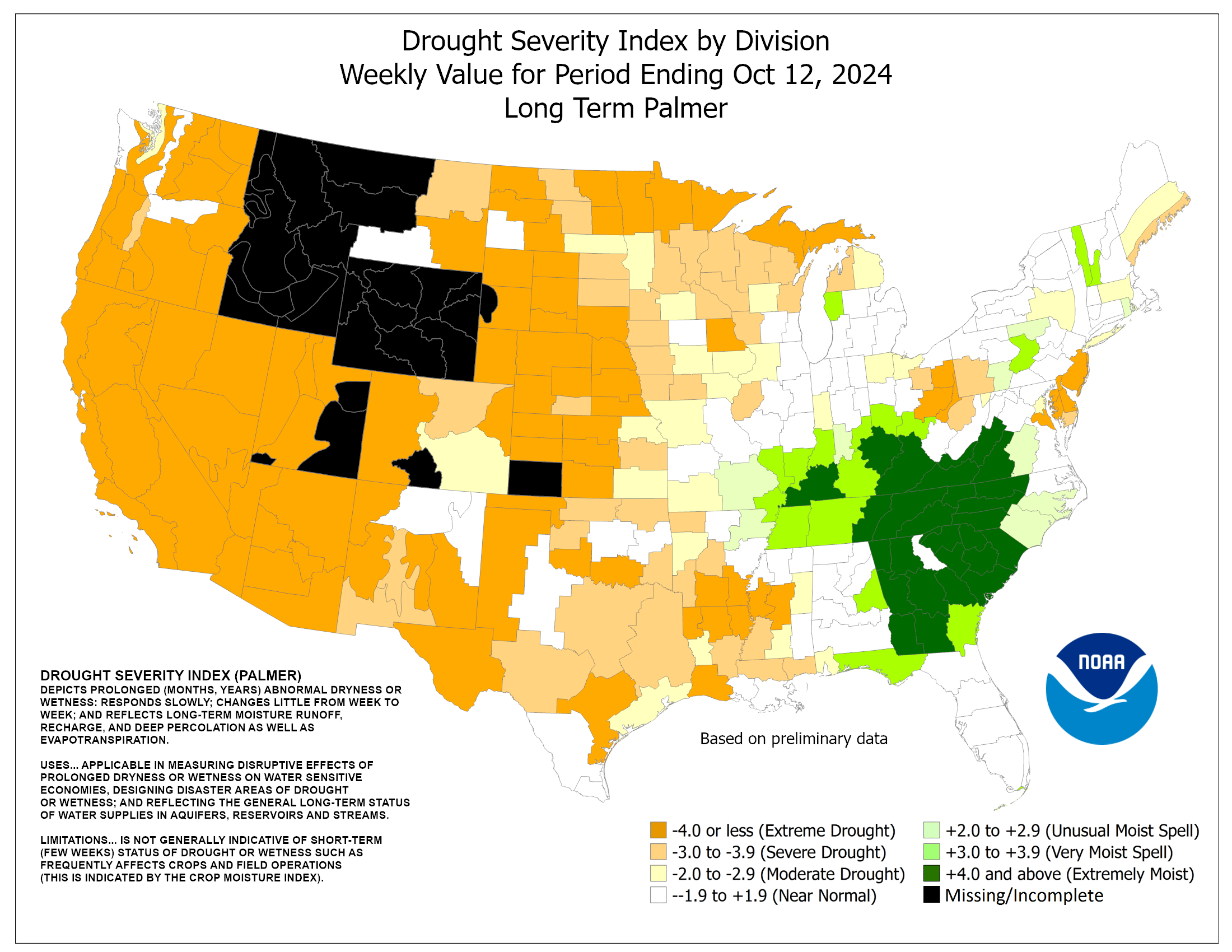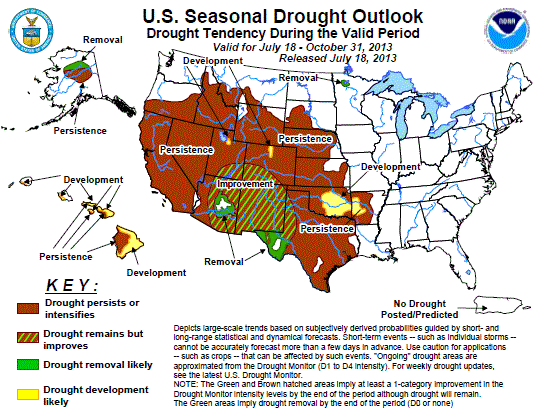 Precipitation, or lack thereof.
Precipitation, or lack thereof.
The Daniel Boone National Forest averages between 43 inches a year in the northeastern section to 53 inches in the southwestern section around the Big South Fork. Currently, the forest is in a precipitation deficit of around 4-8 inches. With the approaching fall and the driest period of the year, the forecast is for a seriously dry time in the woods. This is especially true to south and east, but the high ridges are dust dry now.
The most problematic aspect of a drought this time of year is forest fire hazards. After trees drop their leaves under cloudless skies, the forest floor experiences direct sunlight and high evaporation rates. This produces abundant fuel for forest fires.
So if you’re planning a trip this autumn, be careful with camp fires and consider using stoves for cooking and battery candles for illumination. The following discussion looks at national maps of drought severity and outlook.
This map shows the Palmer Index of Drought Severity and was developed by Wayne Palmer in the 1960s and uses temperature and rainfall information in a formula to determine dryness. It has become the semi-official drought index. You can clearly see the recent track of Hurricane Ike as it moved across the Midwest bringing 3+ inches of rainfall. The drought noticed out west is difficult to judge, since the area has many snowcapped peaks that provide snow melt water to populated areas.

This map shows the predicted drought conditions through the end of the year. Southeastern Kentucky and the Great Smokies are predicted to remain in drought, with no intensification or improvement.

The below maps show average precipitation, 1971-2000 for early fall in Kentucky. They clearly show the decrease of precipitation from September to October. The average decrease is about .5 inch of rain, but in light of the drought, every fraction counts.






